Skip to main content
Philip Evergood
1901–1973
BirthplaceNew York, New York, United States of America
Death placeBridgewater, Connecticut, United States of America
BiographyPhilip Evergood created paintings, drawings, and prints that combine fantasy and social realism for pointed comment on the human condition. Born Philip Blashki, Evergood was the son of a wealthy, cultivated Englishwoman and a Polish-Jewish landscape painter from Australia. He was born in New York, but when his parents sent him to England for his education, they changed his name to Evergood (an anglicization of his paternal grandmother’s maiden name, Immergut) to avoid anti-Jewish prejudice. The young man studied at Eton and Cambridge University before enrolling at London’s Slade School of Art. He returned to the United States in 1923, took up residence in New York City, and studied at the Art Students League under social realist painter George Luks, who encouraged Evergood to find his subjects in the city life around him.
Evergood became a member of a circle of progressive artists using figurative art to champion social causes, among them Chaim Gross (1904–1991) and Moses Soyer (1899–1974), who would become his lifelong friends. Between 1924 and 1926, Evergood traveled in Europe. In Paris, he met dancer Julia Cross, whom he later married. Evergood’s first one-man exhibition, held in a New York gallery in 1927, consisted largely of works on biblical themes, but he was beginning to take his subjects from contemporary life. In 1930 and 1931, he returned to Paris and also visited Spain to study the work of the Spanish old masters.
Evergood rendered his biblical and fantasy images, still lifes, and nudes in an individual, highly graphic style of deliberate, almost cartoon-like exaggeration and sometimes disturbingly garish color. In the 1930s, his approach was energized by his passionate commitment to causes of social betterment. He both participated in and used his art to document the struggles of workers, minorities, and the poor, and he was an active member of progressive artists’ organizations, such as the Artists Union, while working in federally sponsored artists’ relief programs. Under their sponsorship, he completed several mural projects. Throughout his career, Evergood’s artistic achievement was acknowledged in gallery and museum exhibitions and prizes, and he received the patronage of important modernist collector Joseph Hirschhorn. For much of his career, however, Evergood was forced to support himself teaching art and doing various odd jobs. In 1943, he was rejected for participation in the War Department’s art project because of his ties to progressive causes, and in 1959 he came under the government’s scrutiny because of his earlier socialist activities.
The Evergoods moved permanently to Connecticut in 1946. During the 1940s, Evergood turned increasingly to fantasy and symbolism, often to convey his humanistic themes. In the following decade, he exaggerated his forms and used vivid, even violent lines and harsh colors in thickly applied pigment in his biting commentaries on social inequities and the materialism and self-absorption of postwar, suburban American culture. He also continued to paint nudes and pure fantasies. Evergood’s often jarring work repelled many viewers but won others’ acclaim. In 1960, New York’s Whitney Museum of American Art honored the artist with a major retrospective exhibition.
Evergood became a member of a circle of progressive artists using figurative art to champion social causes, among them Chaim Gross (1904–1991) and Moses Soyer (1899–1974), who would become his lifelong friends. Between 1924 and 1926, Evergood traveled in Europe. In Paris, he met dancer Julia Cross, whom he later married. Evergood’s first one-man exhibition, held in a New York gallery in 1927, consisted largely of works on biblical themes, but he was beginning to take his subjects from contemporary life. In 1930 and 1931, he returned to Paris and also visited Spain to study the work of the Spanish old masters.
Evergood rendered his biblical and fantasy images, still lifes, and nudes in an individual, highly graphic style of deliberate, almost cartoon-like exaggeration and sometimes disturbingly garish color. In the 1930s, his approach was energized by his passionate commitment to causes of social betterment. He both participated in and used his art to document the struggles of workers, minorities, and the poor, and he was an active member of progressive artists’ organizations, such as the Artists Union, while working in federally sponsored artists’ relief programs. Under their sponsorship, he completed several mural projects. Throughout his career, Evergood’s artistic achievement was acknowledged in gallery and museum exhibitions and prizes, and he received the patronage of important modernist collector Joseph Hirschhorn. For much of his career, however, Evergood was forced to support himself teaching art and doing various odd jobs. In 1943, he was rejected for participation in the War Department’s art project because of his ties to progressive causes, and in 1959 he came under the government’s scrutiny because of his earlier socialist activities.
The Evergoods moved permanently to Connecticut in 1946. During the 1940s, Evergood turned increasingly to fantasy and symbolism, often to convey his humanistic themes. In the following decade, he exaggerated his forms and used vivid, even violent lines and harsh colors in thickly applied pigment in his biting commentaries on social inequities and the materialism and self-absorption of postwar, suburban American culture. He also continued to paint nudes and pure fantasies. Evergood’s often jarring work repelled many viewers but won others’ acclaim. In 1960, New York’s Whitney Museum of American Art honored the artist with a major retrospective exhibition.

